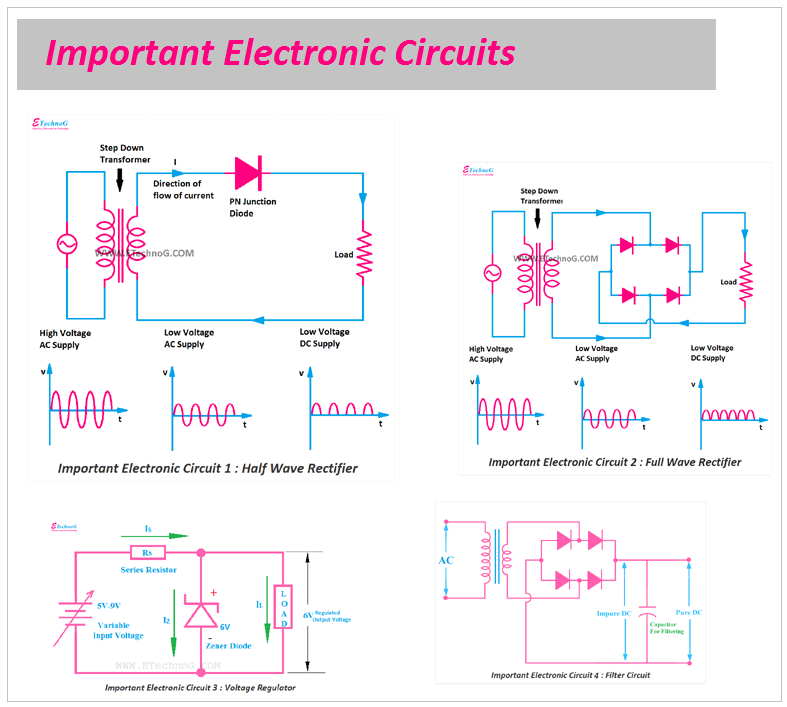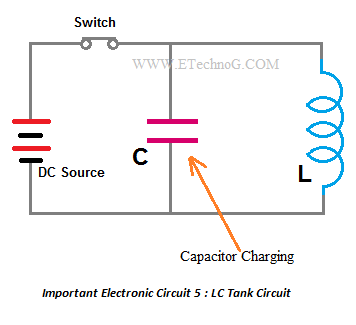Important Electronic Circuit Diagrams and Their Working Principle
Hi, in this article we are going to see the most important electronic circuits and their working principle. As a beginner in the field of electronics engineering, you must know about these circuits. These circuits will help to increase your basic knowledge and learn about the characteristics or properties of different types of active and passive components.
Electronic Circuit 1: Half Wave Rectifier Circuit
Although the application of a half-wave rectifier is very less but you should know about its working principle. It introduces you to the concept of a rectifier. A rectifier is an electrical or electronic circuit that converts the alternating into direct current, We know that the magnitude and the direction of the flowing current continuously change with time. But in some applications such as DC circuits, we need direct current. A half-wave rectifier circuit is built with a single PN Junction Diode. It rectifies one half-cycle only. So the voltage got halved from the main input voltage. You can see the application of a half-wave rectifier in the soldering iron.
Electronic Circuit 2: Full Wave Rectifier
Here, you can see the circuit diagram of the full-wave bridge rectifier. There are two types of full-wave rectifiers - 1. Full-wave rectifier with a center-tapped transformer and 2. Full-wave Bridge Rectifier. Center tapped full wave rectifier not used so much as it has so many drawbacks. The full-wave bridge rectifier is mostly used. It does not need any center-tapped transformer. It is built with four PN Junction Diodes and they are connected in such a way that they form a bridge. The full-wave bridge rectifier can rectify both positive and negative half-cycles. The efficiency of the bridge rectifier is also very high than other types of rectifiers. Also, it is very cheaper in cost.
Electronic Circuit 3: Voltage Regulator
The main function of a voltage regulator is to always keep the output voltage constant even when the input voltage changes or output load changes. The voltage regulator is very useful for sensitive electronic circuits or devices. When the supply voltage varies or fluctuates it harms the operation of a circuit. So a voltage regulator is must be used with the sensitive circuits. Here, you can see the voltage regulator circuit using a Zener diode where the Zener diode is connected in reverse bias with parallel to the supply terminals. Nowadays, there are so many voltage regulators ICs available such as IC 7805, IC 7812, IC 7824, etc.
Electronic Circuit 4: Filter Circuit
The main function of a filter circuit is to filter electrical or electronic signals. Here, you can see the capacitor filter circuit that is used to filter the output of the rectifier circuit. Generally, the output of a rectifier is not pure DC, there are some AC components(called ripple) is available in the output of the rectifier circuit. So to remove those ripples a capacitor is connected in parallel to the output of the rectifier circuit. The capacitor blocks the AC components and allows the DC components.
Electronic Circuit 5: LC Tank Circuit
LC tank Circuit is mainly used to create oscillating signals. The charging and discharging properties of the capacitor and the energy-storing property of the inductor are used to create an oscillating signal.
Here you can read more about LC Tank Circuit
Read Also:






